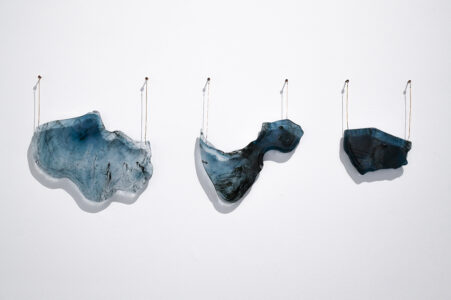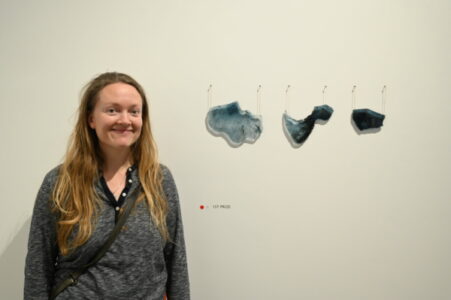
Lisa Bate’s entry, entitled Suspended Deposits, has won the 17th annual Estuary Art and Ecology Awards.
The work makes reference to findings of trace pollutants of heavy metals, found in sediment inside the Tāmaki Estuary waterways.
Bate used glass to demonstrate how the contaminants, from run-off entering the water, is then distributed by tidal currents.
Glass, explains Bate, when in its molten, fluid state, shares similar qualities to water.
“The opacity in the three glass panels transition in appearance from clear to cloudy, which suggests murky polluted pools of water.
“Glass manufacturing uses metal oxides to produce the various colours, the outflow of glass during a kiln firing has caused the glasses to merge on the kiln shelf and reacted chaotically, leaving behind this result.”

Second place went to Daisy Nicholas and her work Reflective Tides, a large-scale crystallisation which explores the beauty that remains in fragments among the Tāmaki Estuary.
It is an extension of her last year’s work, exploring pollutants of the estuary with a large-scale cyanotype.
Third Place went to Brendan Kitto for his entry Tāmaki Estuary (2023).
Kitto’s photography focuses on time and place.
His photographs encapsulate street/landscapes that connect to each other via personal or historic connections.
Merits were awarded to Kiran McKinnon for Down Deep and Andrew Rankin for California Dreaming.
Exhibition of finalists runs until August 26 in the Malcolm Smith Gallery at Uxbridge Arts and Culture.
These entries will also be open for the People’s Award sponsored by the Rice Family Partnership.









